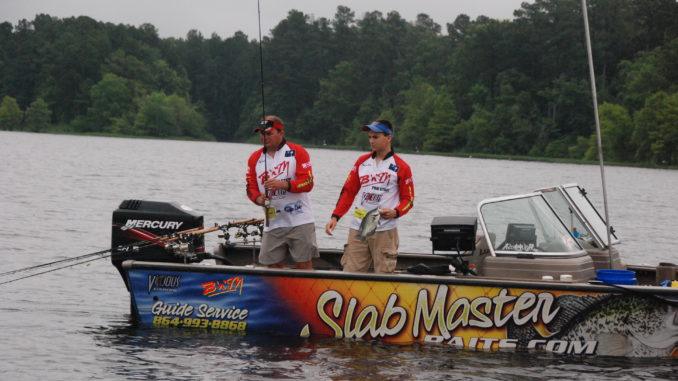
Water characteristics at Lake Greenwood can be a sore subject to crappie anglers. For Rod Wall, who operates a boat-dock construction company, noticing water levels is second nature. In the fall, it’s not of as much concern as the spring.
“The lake definitely went under some changes 4 or 5 years ago,” Rod Wall said. “Santee-Cooper took over the operation of the dam, which created a few changes as far as the drawdown period and the overall rule curve. Santee-Cooper leases the dam from Greenwood County, (which) owns it. There are many different management programs they have to go through with FERC and SCDNR. Drawdown doesn’t affect the crappie as much in the fall as it does in the spring, but when Santee-Cooper pulls water, they pull harder than Duke Power used to.”
Wall said current flow is a factor in how and where crappie situate themselves on Greenwood, but of more concern is the timing of the drawdown that Santee-Cooper is using.
“The biggest flaw that we’ve found that’s hurt the crappie fishery is that the water coming back to full pool is not occurring until April 15,” he said. “Our fish are spawning in the last week of March, as well as the largemouth. The largemouth guys are expressing the same situation. They’re seeing somewhat of a downturn in the numbers of fish. Neither largemouth or crappie are able to get up in the weeds when the water is like it normally is in late March.”
While Santee-Cooper operates the lake on a standard rule curve, like most man-made impoundments, Walls offers that an adjustment in the timing of the drawdown and re-filling would prevent a great crappie fishery from suffering.
“They wouldn’t necessarily have to do the drawdown earlier,” said Wall. “The biggest key to me to ensure that you’ve got good spawning habitat is to bring the lake back to full pool by March 15. When the water is 6 to 8 feet away from the brush and the grasses where the fry don’t have the ability to hide until they can venture out into bigger waters, that new year-class are sitting ducks to predators.”


Be the first to comment